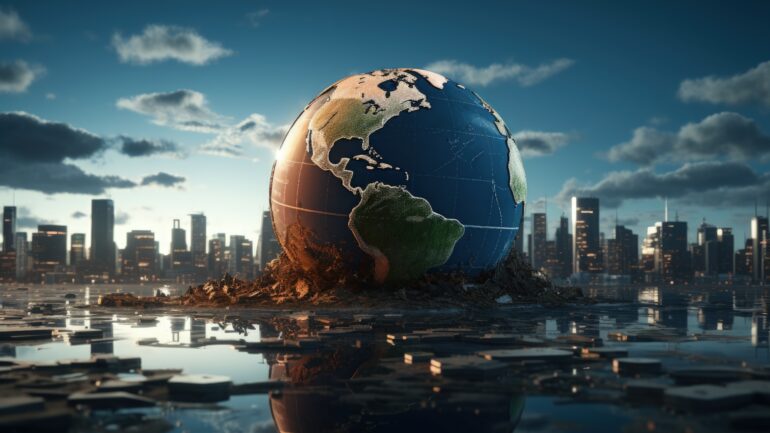Global Companies Face US$1.2-Trillion Climate Risk

The summer of 2025 will perhaps set new records in extreme heat. Climate change is exacting a huge financial toll on companies. Per estimates by S&P global companies face a US$1.2-trillion climate risk.
The S&P Global Market Intelligence in its latest report has sounded a US$1.2-trillion-dollar climate risk alarm for global companies. The authors began the report with a shocking assertion that annual financial impacts of climate physical risks on major global companies were estimated to reach US$1.2 trillion in the next 25 years mainly due to extreme heat and water stress. The sectors to be most affected, according to the report, in the medium term by to the 2050s include utilities, financials, and energy. These estimates only focus on the impacts on company assets and operations, excluding changes in factors such as demand and revenues. In another report, commissioned by the International Chamber of Commerce, it is estimated that climate-related extreme weather events have cost the global economy more than $2 trillion over the past decade.
The S&P report has assessed nine different types of climate-related hazards to see how they can impact finances. These hazards include extreme heat, water stress, coastal flooding, river flooding, heavy rainfall flooding, tropical cyclones, landslides, drought, and wildfires. It’s important to understand and assess these different climate hazards because they can have serious financial consequences.
We are already witnessing some of the severest climate events in the last few years. Hurricanes, wildfires, and floods have been causing a catastrophic damage to human lives, livelihoods and properties. In 2024, it was discovered by scientists that it was the warmest year on record. The global average temperature was more than 1.5 degrees Celsius above preindustrial levels. This increase in temperature is believed to be due to human activities that release greenhouse gases into the atmosphere, causing what we call climate change.
For example, in January of that year, there were catastrophic wildfires near Los Angeles that destroyed many homes and buildings. These fires caused a lot of damage and economic losses, estimated to be between $250 billion to $275 billion. This is more expensive than the entire wildfire season in 2020. Sadly, at least 29 people lost their lives in these fires, and over 18,000 structures were damaged or destroyed.
Scientists believe that human-induced climate change has made conditions for wildfires 35% more likely. This means that because of the changes in our climate, wildfires are more likely to happen and become more severe. This analysis was done by the World Weather Attribution, a group that studies how climate change affects extreme weather events.
In simple terms, this text is telling us that the Earth’s temperature is rising because of human activities, which is making extreme weather events like wildfires more frequent and dangerous. It’s important for us to take action to reduce our impact on the climate to prevent more harm to our communities and the environment.

The report predicts that by the 2030s, companies in the S&P Global 1200 could lose $885 billion each year because of climate-related risks. This amount is expected to increase to $1.2 trillion in the 2050s and $1.6 trillion in the 2090s. The estimates are based on a scenario where greenhouse gas emissions stay the same until 2050 and then start to decrease. This scenario is called SSP2-4.5. It is projected that this scenario will cause global temperatures to rise by 2.7 degrees Celsius by the end of the century.
The report explains that different dangers can affect various industries in different ways. For example, the water supply sector may be more at risk from water shortages than extreme heat. This is because water is crucial for making electricity using steam turbines and running hydroelectric dams. When there is not enough water, these processes can be disrupted. Additionally, other hazards like drought can make the situation worse by reducing the availability of freshwater for different uses, such as industry and households.
These hazards can interact and have a bigger impact when combined. By the 2050s, per the report, the largest economies in the world are expected to face more severe drought conditions, which could further worsen these problems.


